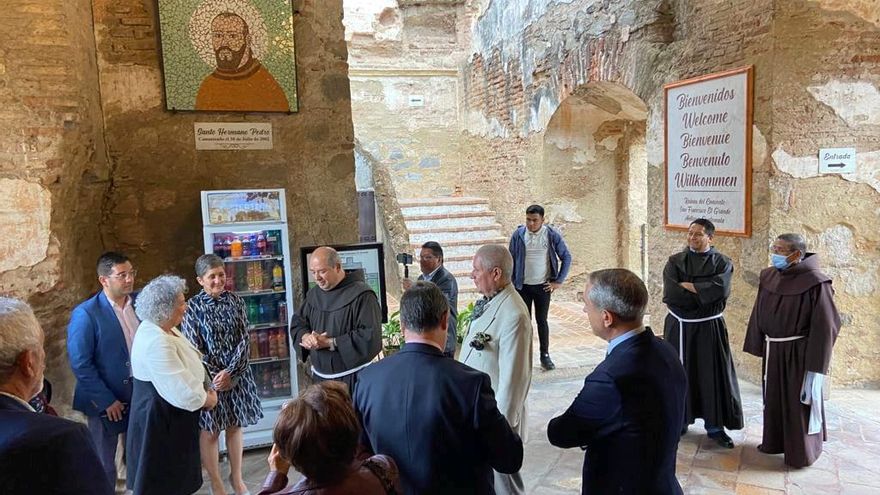
The main hall of the Palace of the City Hall of La Antigua Guatemala was the scene of the act of Twinning between the municipality of Vilaflor de Chasna and the Very Noble and Very Loyal City of Santiago de los Caballeros, La Antigua Guatemala. An institutional act took place last Saturday and with it the mayoress chasnera, Agustina Beltrán, and the Guatemalan mayor, Víctor Hugo del Pozo, signed “the brotherhood between both municipalities and, with it, the commitment to strengthen historical, cultural ties and social relations between both cities and the faith and devotion for the Saint Brother Pedro de Betancur».
The formal act was also attended by members of the Municipal Corporation of Vilaflor de Chasna and the Municipal Council of La Antigua, as well as the Spanish ambassador, José María Laviña; the Guatemalan consul in Santa Cruz de Tenerife, Alejandro Tosco de Castro; the Community of Franciscan Friars and the Community of Bethlemite Brothers.
Previously, on the same Saturday morning, it was held, in the Chapel of San Antonio of the Temple of San Francisco el Grande, a solemn mass with the presence of the mayoress and the councilor of both municipalities, Agustina Beltrán and Victor Hugo del Pozo, respectively. This Eucharist was attended by the same personalities.
At the end of the religious act, the Vilaflor delegation paid a visit to the Santo Hermano Pedro museum, where they were able to appreciate religious objects as well as the belongings of Santo Hermano Pedro de Betancur that are guarded by the Franciscan congregation.
origin and end
The twinned municipalities are closely linked by the life and work of the first Canarian saints. Pedro de San José de Betancur was born on March 21, 1626 in Vilaflor de Chasna and died, when he was 41 years old, on April 25, 1667 in the city of La Antigua Guatemala, then called the Very Noble and Loyal City of Santiago de The Knights.
In the church of San Francisco in this city are the remains of who is also considered the first saint of Guatemala and Central America. Since his death, his remains have been buried in various enclaves of this temple: the old sacristy (1667-1684), the south transept (1684-1692), the cupboard closest to the main altar, on the south wall (1703-1817 ), in the chapel of the Third Order (1817-1990) and in the Veracruz chapel.















